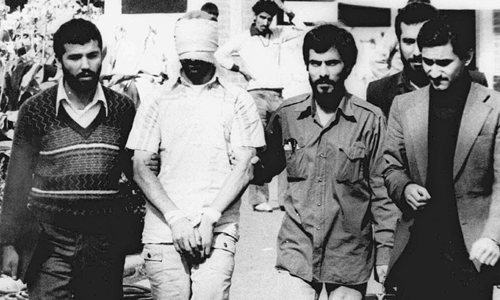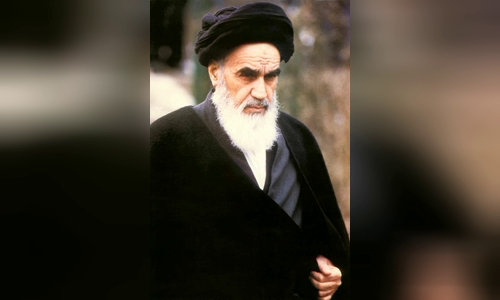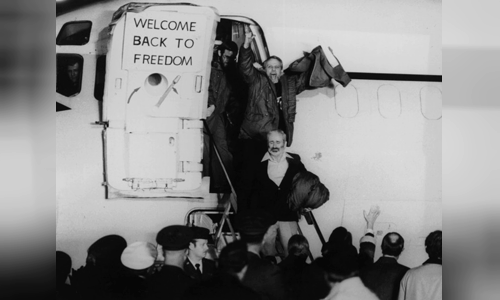On the morning of November 4, 1979, hundreds of Muslim students stormed the US embassy in central Tehran, Iran, climbing over walls and fences.
Claiming to be followers of dissident cleric Ayatollah Khomeini, a group of students asked to extradite deposed king Mohammad Reza Pahlavi from the US to return to Iran. The students were angry because Washington allowed King Pahlavi to come to the US for medical treatment.

A human hostage (blindfolded) blindfolded and tied hands at the US embassy in Tehran in 1979 Photo: IPM
"Bringing sticks and sticks, the students captured the embassy office in three hours, although the US Marines fought with tear gas grenades before being held hostage," AFP correspondent at the scene. at that time reporting.
More than 60 Americans were taken hostage, hands were tied and eyes covered. Some were quickly released but 52 were still arrested. Muslim students put up a gallows in front of the embassy, at the end of the string hung a sign that read: "For the King."
"Besides the gallows, the American flag was burned in front of the raised fists of hundreds of people gathered to show support for the embassy occupiers.
The American flag has been replaced by a green poster that reads "Allahu Akbar" (Great Allah). A loudspeaker constantly chanted anti-American slogans alongside the teachings in the Koran and revolutionary songs. In front of the embassy, police and Iranian Revolutionary Guards were deployed.
The bearded male students carrying sticks with female students in robes holding the portrait of King Khomeini took turns walking around the gardens in the embassy campus.

Rabbi Ayatollah Khomeini Photo: Wikiquote
"Bread and sandwiches were delivered to them through the fence," one witness said.
The spontaneous attack on the US embassy was sparked by fervent psychology in response to an Islamic revolutionary movement. Tough religious leaders disagree with the interim Iranian Prime Minister, the moderate Mehdi Bazargan, who is expected to negotiate with the United States.
Bazargan resigned on November 6 and a Revolutionary Council with the majority clergy stood to take over the government. Iran refused to sell oil to the US. In response, Washington enacted an embargo on consumer goods imported into Iran and froze its financial assets.
The administration of US President Jimmy Carter severed diplomatic relations with Iran on April 7, 1980, and increased pressure with a trade embargo.
A top-secret operation known as Eagle Claw was carried out to rescue the American hostages at the embassy, but eventually turned into a disaster on April 25 at a location 400 km southeast of Tehran. A sudden desert sandstorm caused a helicopter and an American C-130 transport plane to crash, killing eight soldiers. Operation Eagle Claw is canceled.

American hostages returned home after 444 days of arrest in Iran Photo: Express
Rabbi Khomeini considered the failure a punishment of the gods for the United States, which he called "Satan Devil". The hostages were then taken to various cities.
On July 27, King Mohammad Reza Pahlavi died in Cairo, Egypt. Muslim students vowed not to take hostages until the king's personal possessions were returned to Iran.
In September 1980, Khomeini stated four conditions for hostage release: The United States must return all assets belonging to King Pahlavi, release Iran's frozen assets in the US, and cancel the claims that Washington ever made and pledged not to interfere in Iran's internal affairs.
Thanks to the intermediaries of Algerian diplomats, a US-Iran treaty on hostage liberation was signed on January 19, 1981. The 52 hostages were released on January 20, the same day US President Ronald Reagan took office.
Today, the US embassy in Tehran is managed by Basij, a volunteer team of the Iranian Revolutionary Guard, in which part of the complex is used as a museum and gathering space for student groups. Similarly, the Iranian embassy in Washington has remained empty since President Jimmy Carter expelled all Iranian diplomats during the crisis. It is currently closed and administered by the US Department of State.



 AlfrediaHopkins
AlfrediaHopkins







